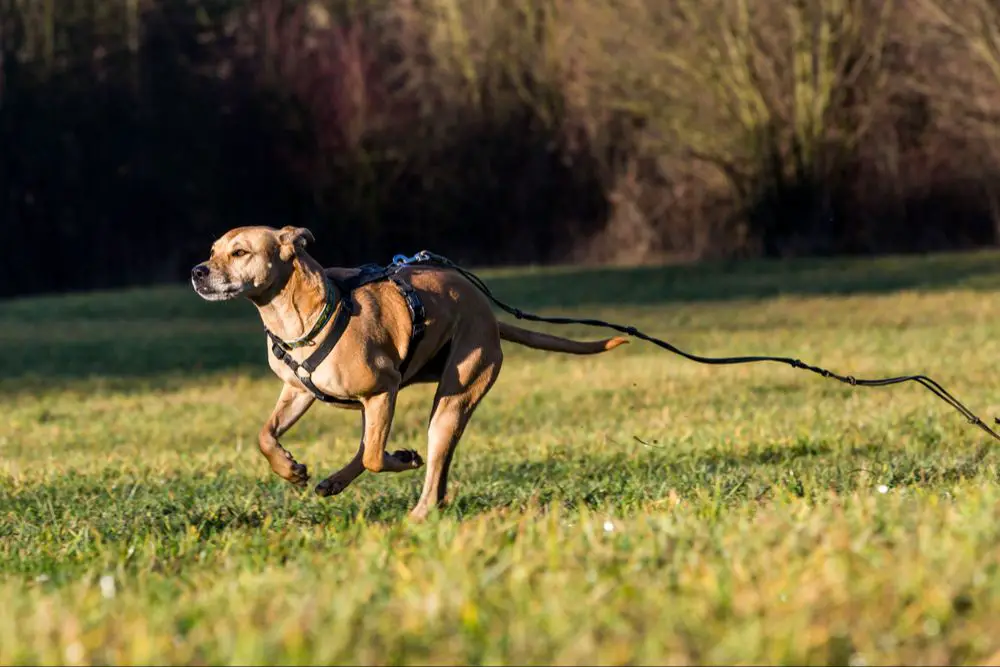Introduction
The heartbreaking feeling when you realize your beloved canine companion is gone is one that no dog owner wants to experience. But unfortunately, dogs running off and getting lost is an all too common occurrence. According to research, an estimated 15% of dogs will become lost at some point in their lives.
When a dog goes missing, it’s natural for owners to feel distressed and worried about what might happen. Will they be able to find their way home? How far could they have travelled? What are the chances they will return on their own? This guide examines why dogs run off, how far they typically roam, what factors improve their chances of getting back home, and most importantly, what you can do if your beloved four-legged friend takes off unexpectedly.
Why Dogs Run Away
There are several common reasons why dogs may run away from home, even dogs who are loved and well cared for. According to sources, the top reasons include boredom, separation anxiety, and fear.
Boredom is one of the most common reasons dogs run off. Dogs need daily mental and physical stimulation. Without adequate walks, play time, or activities, they can become restless and look for adventure outside the home (Source). Wandering and exploring is self-rewarding for dogs.
Separation anxiety can also cause dogs to run away, especially when left alone for long periods. They may escape out of anxiety over being separated from their owner (Source). Separation anxiety symptoms include destruction, housetraining accidents, and escape attempts.
Fear is another trigger for running away. Loud noises like thunder, fireworks, or construction can startle some dogs so much they bolt. Traumatic experiences or abuse can also lead fearful dogs to run off (Source). They are attempting to flee what they perceive as danger.
How Far Do Dogs Typically Travel?
According to studies cited by Petfinder, most dogs are recovered within a two-mile radius of their home. However, how far a dog will travel when lost depends on several factors:

Breed – Some breeds like hounds are more likely to roam farther than others. Smaller breeds may only go half a mile at most.
Age – Younger dogs tend to wander farther than older dogs. Puppies especially have less fear and inhibition about exploring new areas.
Temperament – Shy, timid dogs may stay close to home while curious, energetic dogs are more likely to cover more ground.
According to Pet FBI, terrain and weather conditions also play a role. Dogs may travel farther in open areas versus dense woods or urban environments. Bad weather can also motivate a dog to seek better shelter.
The circumstances of how the dog got lost matter too. A dog that bolted into unfamiliar territory due to fear is likely to go farther than one let outside by accident.
Factors That Help Dogs Find Their Way Home

Dogs rely heavily on their sense of smell and familiarity with their surroundings to find their way home after running away. According to the Humane Society, dogs are skilled at using their powerful sense of smell to follow their own scent trail back to places they’ve been before [1]. Even after traveling a fair distance, dogs can pick up and follow their own scent to retrace their steps if they have previously walked or been driven on those routes.
Additionally, visual cues and landmarks around the neighborhood can help orient a lost dog and point them in the direction of home, just as it would for a person [2]. If your home is near a school, park, or other familiar location your dog regularly visits on walks, they may head in that direction upon escaping. Dogs that have experience exploring the area unattended generally have better “street smarts” to find their way back.
However, dogs new to an area or that have been primarily confined to a yard may have more difficulty navigating back using their senses and knowledge alone. In those cases, flyers, lost dog alerts, and other techniques are especially important.
What to Do if Your Dog Runs Off

If your dog runs away, it’s important not to chase after them. Chasing can trigger a dog’s prey drive and cause them to run even further away. Instead, remain calm and call your dog’s name in an upbeat tone to encourage them to come back to you.
Having identification on your dog such as tags with your phone number or a microchip can greatly increase the chances of getting your dog back if they become lost. Make sure your dog’s microchip information and tag contacts are up to date. This gives people who find your dog a way to reach you.
When your dog first goes missing, immediately check around your home and neighborhood just in case they are nearby. Talk to neighbors in case they have seen your dog wander by. Drive around the area searching carefully as a dog can hide or get stuck somewhere like under a porch or in thick bushes.
Call and visit local veterinary offices, shelters, and animal control to file a lost pet report with your dog’s information. Check back regularly in case someone brings your dog in.
Posters and Flyers
When making missing pet posters and flyers, the most important details to include are a clear, recent photo of your pet, the word “LOST” or “MISSING” in large, bold letters, your contact information including phone number, and a physical description of your pet including breed, age, sex, color, and any distinct markings.
According to https://www.wikihow.com/Make-an-Effective-Missing-Pet-Poster, you should keep the text brief and use bullet points for key details. Only include the most essential information to help identify and recover your pet.
The best places to post flyers are around the neighborhood where your pet went missing, at local veterinary offices, pet stores, dog parks, shelters, and high-traffic community areas. According to https://www.weenect.com/us/en/guide/how-to-lost-pet-poster/, distributing flyers within a 2-5 mile radius initially, then expanding further if needed, is recommended.
Notifying Shelters
One of the most important steps to take when a dog runs away is to notify local animal shelters. Shelters will often take in strays, so there’s a good chance your lost dog may end up at one if they can’t find their way home. Be sure to call or visit shelters in your immediate area first, then expand outward to check shelters within a wider radius if your dog is still not found.
When you call or visit a shelter, have a photo of your dog ready to show staff and give a detailed description, including your dog’s name, breed, age, gender, color, and any distinguishing features. Provide your contact information like phone number and address, and ask the shelter to call you if your dog is brought in. Check back with the shelter regularly in case your dog shows up later.
According to the Humane Society,animalcontrol.com can help locate local animal shelters and animal control agencies. You can search for organizations by zip code and get their contact information to notify them about your lost dog.
Source: https://www.humanesociety.org/resources/how-find-lost-dog
Social Media and Alerts
Social media can be a powerful tool for finding lost pets. Posting about your missing pet on Facebook is one of the most effective strategies. Share posts in local community groups, lost pet groups, and with friends and family. Ask people to share the post so it reaches more users in your area. Apps like PawBoost also leverage social media by allowing you to create a digital lost pet flyer that is shared with local users (source). The more shares your post gets, the better chance it will reach someone who has seen your pet.
You can also post about your lost pet on Nextdoor, Craigslist, and other community boards. Include a photo of your pet, details about when and where they went missing, and your contact info. Check these sites daily for found pet reports. Refreshing your posts frequently will keep them active and improve visibility (source).
Social alert tools like PawBoost and Finding Rover use facial recognition technology to help match lost pets with ones spotted in shelters and social media posts. You can upload your pet’s photo to their database for free and get notified of possible matches (source). These services leverage the power of the crowd to increase your chances of being reunited.
When to Give Up Hope
It’s heartbreaking when a beloved pet goes missing, but try to stay positive. Research shows the chances of finding a lost dog alive are still quite high even after 24 hours.

According to Lost Pet Research & Recovery, 93% of lost dogs are found alive, and 20% of them return home on their own [1]. Even after a week, there’s still an excellent chance of being reunited with your furry friend.
That said, the odds do start to diminish over time. Pawmaw suggests continuing an active search for at least 2 weeks before losing hope. Check shelters daily, keep posters up, and don’t give up on social media. With persistence and community support, there’s still hope.
At some point, you may need to make the difficult decision to stop active searching. But try to find comfort knowing you did everything possible. And keep an eye out just in case your pup finds their way back home.
Preventing Future Runaways
There are several steps dog owners can take to help prevent their dog from running away again:
Training is very important. Teaching your dog basic obedience commands like “sit,” “stay,” and “come” will give you more control if they try to run off. Consider enrolling in a training class or working with a professional dog trainer. The more practice a dog gets, the better they will respond when called (https://www.aaha.org/your-pet/pet-owner-education/ask-aaha/dog-safety-run-away-prevention/).
Containment is another key factor. Fencing in your yard or using a long lead when outdoors will restrict your dog’s ability to wander. Dog-proof fencing, with a secure latch and no gaps, is ideal. Be sure any outdoor kennel or run also has a roof or cover to prevent climbing and jumping out (https://www.thesprucepets.com/why-dogs-run-away-4587466).
Finally, try to determine and address the root cause for your dog running away. Were they bored, frightened by loud noises, looking for a mate, etc? Meeting their needs for physical/mental stimulation and creating a safe space at home can reduce the desire to escape.